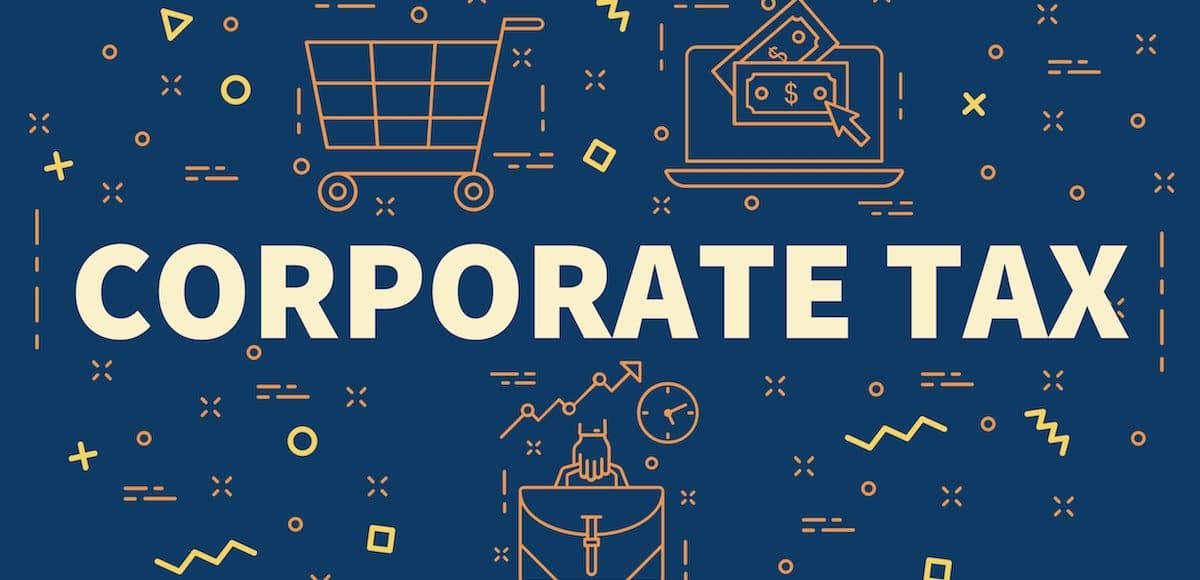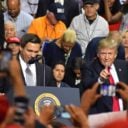
There were several good features of the 2017 tax bill, including limitations on the state and local tax deduction.
But the 21 percent corporate tax rate was the unquestioned crown jewel of the Tax Cut and Jobs Act (TCJA). The U.S. system had become extremely anti-competitive thanks to a 35 percent rate that was far above the world average, so reform was desperately needed.

That’s the good news.
The bad news is that Democrats in the House of Representatives already are pushing for a big increase in the corporate rate.
Rep. John Yarmuth, the new House Budget chairman, said his chamber’s budget blueprint will aim to claw back lost revenue by boosting the corporate tax rate from its current 21 percent to as high as 28 percent… he anticipates the budget resolution will envision changes to the 2017 GOP tax overhaul, including raising the corporate tax rate above its current 21 percent. “…We’ll see how much revenue we can get out of it.” The rate was 35 percent before it was cut in the GOP tax bill.
Since Republicans control the Senate and Trump is in the White House, there’s probably no short-term risk of a higher corporate tax rate.
But such an initiative could be a major threat after the 2020 election, so let’s augment our collection of evidence showing why a higher rate would be a very bad idea.
We’ll start with some analysis from the number crunchers at the Tax Foundation.
A corporate tax rate that is more in line with our competitors reduces the incentives for firms to realize their profits in lower-tax jurisdictions and encourages companies to invest in the United States. Raising the corporate income tax rate would dismantle the most significant pro-growth provision in the Tax Cuts and Jobs Act, and carry significant economic consequences. …Raising the corporate income tax rate would reduce economic growth, and lead to a smaller capital stock, lower wage growth, and reduced employment. …Raising the rate to 25 percent would reduce GDP by more than $220 billion and result in 175,700 fewer jobs.
Here’s the table showing the negative effect of a 22 percent rate and a 25 percent rate, so a bit of extrapolation will give you an idea of how the economy will suffer with a 28 percent rate.

By the way, since the adverse impact on wages is one of the main reasons to be against a higher corporate tax rate, I’ll also share this helpful flowchart from the article.

Now let’s look at some research from China, which underscores the importance of low rates if we want more innovation.
Here’s the unique set of data that created an opportunity for the research.
In November 2001, China implemented a tax collection reform on all manufacturing firms established on or after January 2002, which switched the collection of corporate income taxes from the local tax bureau to the state tax bureau. After the reform, similar firms established before or after 2002 could pay very different effective tax rates because of the differences in the management and incentives of those two types of tax bureaus…, resulting in a reduction of effective corporate income tax rates by almost 10% among newly established firms. …the policy change created exogenous variations in the effective tax rate among similar firms established before versus after 2002. We can thus apply a regression discontinuity design (RD) and use the generated variation in the effective tax rate to identify the impact of taxes on firm innovation.
And here are the findings.
Our analysis yields several interesting results. First, we show a strong and robust causal relationship between tax rate and firm innovation. Decreasing the effective tax rate by one standard deviation (0.01) increases the average number of patent application by a significant 5.7% (see Figure 2 for the graphical evidence). The reform also stimulated R&D expenditures and increased the skilled-labour ratio by 14%. Second, a lower tax rate also improves the quality of patents. The impact of tax reform on patent applications mainly comes from its effect on invention and utility patents – decreasing the effective tax rate by one standard deviation improves the probability of having an invention patent application by 4.4% and increases the number of utility patent applications by 4.7%.
Don’t forget that high personal tax rates also discourage innovation, so it’s a pick-your-poison menu.
Here’s a chart from the study, showing the difference in patents between higher-taxed firms and lower-taxed firms.

Last but not least, let’s review some of the findings from a study published by the National Bureau of Economic Research.
We present new data on effective corporate income tax rates in 85 countries in 2004. …In a cross-section of countries, our estimates of the effective corporate tax rate have a large adverse impact on aggregate investment, FDI, and entrepreneurial activity. For example, a 10 percent increase in the effective corporate tax rate reduces aggregate investment to GDP ratio by 2 percentage points. Corporate tax rates are also negatively correlated with growth, and positively correlated with the size of the informal economy. The results are robust to the inclusion of controls for other tax rates, quality of tax administration, security of property rights, level of economic development, regulation, inflation, and openness to trade
And here’s one of the many charts and tables in the study.

The bottom line is that a higher corporate tax rate will be bad for workers for the simple reason that less investment means lower productivity and lower productivity means lower wages.
P.S. It’s also likely that House Democrats will try to increase the top personal tax rate, though hopefully they’re not so crazy as to push for Ocasio-Cortez’s 70 percent rate.






